
Agriculture
December 18, 2023
Eco Femme Subsidized Pads
Read SolutionImplemented by
Eco Femme

Updated on December 28, 2024
·Created on September 18, 2020
The Eco Rocket Stove is a passive-draft, wood-burning, combined cookstove and room heater.
The Eco Rocket Stove is a combined cookstove and space/room heater. There are three different models (the Eco1, Eco2 and Eco3) designed for heating spaces of different sizes ranging from the needs of a typical Himalayan family up to the scale of a guesthouse dining room.
It is intended to significantly reduce the amount of wood needed for cooking and household heating. It does this through its rocket stove design, which passively draws the wood gas and smoke into a secondary combustion chamber at 700 – 1000 °C where they are burnt to create additional heat energy. This near-complete combustion also means that most of the smoke is converted to end products including carbon dioxide, reducing the indoor air pollution produced by the stove.
The stove is manufactured and sold commercially by the Himalayan Rocket Stove PVT LTD and its dealers. A hot water module compatible with the stove is currently available and other modules are being developed.
Target SDGs
SDG 7: Affordable and Clean Energy
SDG 3: Good Health and Well-Being
Market Suggested Retail Price
$395.00
Target Users (Target Impact Group)
Household
Distributors / Implementing Organizations
The Himalayan Rocket Stove is available for pickup from the manufacturer's stores in Baddi, Manali, Leh, and Rekonh Peo and their dealers in the region. They also have sales outlets in Thimphu in Bhutan and Kathmandu in Nepal. Beyond these, they deliver to some other parts of India and other Himalayan countries when agreed by contacting them. Orders to locations in India can also be made through the manufacturer's online shop.
Countries
Bhutan, India, Nepal
Manufacturing/Building Method
The Eco Rocket Stoves are manufactured and stored in warehouses located around Parwanoo, Baddi, and Nalagarh in northern India. There are 3 major local manufacturers, with several other minor manufacturers producing accessories for the product.
According to the Eco1 Rocket Stove product page: "The external box is made from heavyweight black steel for maximum heat radiance and the internal components use the highest quality stainless steel SS310 for high temperature operating longevity."
Intellectural Property Type
Open-source
User Provision Model
Users purchase the product from the manufacturer or local dealers, although delivery is also possible to some locations. For an additional fee, the retailer will install the product in the user's home. If users do not have their own flue pipes from a previous room heating stove, they can purchase pipes from the same retailer.
Distributions to Date Status
2,000 units had been manufactured as of November 2019.
Fuel type
Wood
Chimney (yes/no)
Yes
Forced or passive
Passive
Pot type
Flat bottom
Pot capacity (L)
100 L
Thermal efficiency (%)
10.74 %
PM emissions (g/MJ delivered to pot)
0.88 g/MJ
CO emissions (g/MJ delivered to pot)
23.30 g/MJ
Time to boil (min/L)
10 mins per Litre
Design Specifications
The Eco Rocket Stove contains two combustion chambers; the first is fed with wood, and the by-products from this wood burning (smoke and wood gas) naturally flow to the second chamber, which is vertically insulated and at a much higher temperature (700 - 1000 °C). The higher temperatures and additional drawn in Oxygen allow the smoke and wood gas to combust, releasing more energy (as heat) and destroying some harmful by-products of typical wood combustion such as carbon monoxide and smoke particulates. Rather than immediately releasing these hot waste gases, they trap them within the box so that they can efficiently transfer their heat to the room through the stove's metal casing. By the time the waste gases leave the stove to outside through the flue, they are therefore back to a normal gas output temperature, having imparted all of the extra heat to the room. The key design improvements are over other rocket stoves are "in primary preheated airflow, secondary preheated airflow, vortexing of combustion gases in the secondary combustion chamber and heat trapping, which improves thermal efficiency dramatically” according to co-designer Russell Collins.
The stove consumes from less than 1 kg up to 2 kg of wood as fuel per hour of operation depending on the model.
The manufacturer states regarding the materials used: "The external box is made from heavyweight black steel for maximum heat radiance and the internal components use the highest quality stainless steel SS310 for high temperature operating longevity."
The different models range in weight from 45 kg to 55 kg and have the following dimensions (length x width x height) including exhaust hood:
Eco1 = 840 x 450 x 500 mm
Eco2 = 840 x 450 x 625 mm
Eco3 = 840 x 450 x 825 mm
The stoves as standard come un-decorated and with a metal fire door, but stainless steel decorations and an alternative glass door are available for an additional cost. Other modules to provide additional operations using the stove's heat are also available from the manufacturer.
Technical Support
The dealer selling the product can assist with the installation and the manufacturer provides a troubleshooting guide on their website.
For further support, contact the manufacturer.
Replacement Components
Replacements are available free from the manufacturer within the 24 month warranty period, and beyond that replacement, components can be purchased from the manufacturer.
The design is deliberately modular so as to facilitate ease of component replacement. Interview with designer
Lifecycle
The manufacturer expects the product to have 'decades' long lifespan. A two year (24 months) warranty covering all parts is provided with every purchase.
Manufacturer Specified Performance Parameters
The product is designed to be clean-burning and high efficiency; with fuel savings of 50%, a 90% reduction in smoke pollution, and 50% additional heat released to the room.
Vetted Performance Status
Testing performed by the manufacturer has indicated the product has close to an 85% efficiency at converting wood to heat and uses 50% less wood than traditional 'bukhari' stoves. The Eco Rocket Stove's performance as a cookstove has been vetted by India's National Environmental Engineering Research Institute, Nehru Marg, Nagpur, finding a thermal efficiency for cooking of 10.74 % and PM and CO emissions of 0.88 g/MJ delivered to the pot and 23.30 g/MJ respectively. The product's performance as a space heater has not been vetted by any external organizations since no organizations that are equipped to test space heating units exist in India. Interview with designer
Safety
Sensible precautions should be taken when operating or being near a hot stove.
Complementary Technical Systems
The manufacturer offers a glass fire door kit as an alternative to the standard metal fire door and a customizable exhaust flue pipes kit for those who do not already have their own flue pipes.
In addition, a hot water hamam (hot water heating module) is currently available in two different sizes (12 L and 25 L) and other modular add-ons are currently in development.
Academic Research and References
There is no literature covering the Eco Rocket Stove specifically, however substantial literature exists regarding space heaters in northern India and the risks of carbon monoxide heating from such heaters:
Zakiah, M., Feenstra, A., 2013, Space Heating Improvement in East Sikkim. Gurgaon, 10(1), pp. 79-83, 86.
Reichert, G., Hartmann, H., Haslinger, W., Oehler, H., Mack, R., Schmidl, C., Schön, C., Schwabl, M., Stressler, H., Sturmlechner, R., Hochenauer, C., 2017, Effect of draught conditions and ignition technique on combustion performance of firewood roomheaters. Renewable Energy, 105, pp. 547-560.
Holm, D., 2008, Space Heating Needs in Asia. Workshop for Decision Makers on Direct Use of
Geothermal Resources in Asia.
2008, Financial evaluation of different space heating options used in the Kashmir valley, International Journal of Ambient Energy, 29(2), pp. 75-82.
Sharma, A., 2016, Carbon monoxide poisoning in our homes – report of two survivors from North India. Medico-Legal Journal, 84(2), pp. 87–89.
Gautam, S., Pillarisetti, A., Yadav, A., et al., 2019, Daily average exposures to carbon monoxide from combustion of biomass fuels in rural households of Haryana, India. Environ Dev Sustain, 21, pp. 2567–2575.
Sikary, A.K., Dixit, S., Murty, O.P., 2017, Fatal carbon monoxide poisoning: A lesson from a retrospective study at All India Institute of Medical Sciences, New Delhi. Journal of family medicine and primary care, 6(4), pp. 791–794.
Eco Stove Shop. n.d.. Himalayan Rocket Stove.
Eco 1 Rocket Stove. n.d.. Himalayan Rocket Stove.
Eco 2 Rocket Stove. n.d.. Himalayan Rocket Stove.
Eco 3 Rocket Stove. n.d.. Himalayan Rocket Stove.
Window Pipe Kit. n.d. Himalayan Rocket Stove.
Hot Water Hamam. n.d. Himalayan Rocket Stove.
Contact. n.d. Himalayan Rocket Stove.
FAQ. n.d. Himalayan Rocket Stove.
Collins, Russell. 2019. HRS Update NOV 2019 . November 7, 2019. Himalayan Rocket Stove.
Goodier, Rob. 2019. IShow India 2019 Awards Silk, Stoves and Stethoscopes. Engineering for Change. April 10, 2019.
Smokeless Cookstove Foundation. n.d. Smokeless Cookstove Foundation.
Clean Burning Rocket Stove for the Himalayas – What You Need to Know. 2020. www.youtube.com.
Compliance with regulations
India does not currently regulate space heating units like the Eco Rocket Stove, however, the manufacturer is working with Social Alpha on establishing Combustion Heating Standards for India. Interview with designer
Evaluation methods
The manufacturer has performed internal comparison testing between typical combustion heaters and Eco Rocket Stove units. They have also performed customer feedback surveys. In 2020, they are undertaking a baseline vs user comparison survey with 100+ in each sample group for South Pole as part of Gold Standard evaluation for Carbon Credits. Interview with designer
Other Information
The manufacturer lists several benefits of the stove, including saving trees (higher efficiency), time (collecting wood), backs (of women carrying the wood), and money (spent buying wood). They list their vision as: "To save one million Himalayan trees by 2026".
During the stove development process, they also discovered an easy, cheap and effective way for low-income homes to make their own smokeless chulha's (cookstoves); which has been developed into a separate not-for-profit foundation: the Smokeless Cookstove Foundation.
The Eco Rocket Stove was one of the winners of ASME's ISHOW India 2019. A video discussing the stove produced during the competition can be found here. Following the competition, the stove has been featured in an article by Engineering for Change's Managing Editor Rob Goodier.
The product has also been included in WWF's recent 'Sustainable space heating solutions in the Himalayan region' report, where it is compared against other space heating solutions.
A video describing how the stove achieves such high temperatures can be found here and another on how to light the stove can be found here.
Himalayan Rocket Stove kindly shared their Customer Feedback Report during an interview with the designer.

Agriculture
December 18, 2023
Implemented by
Eco Femme
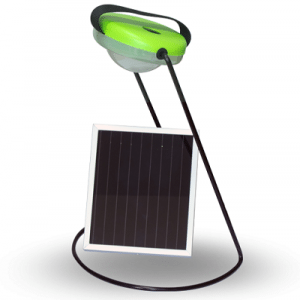
Agriculture
December 17, 2024
Implemented by
Sun King

Agriculture
July 2, 2024
Implemented by
Aquatron

Agriculture
August 16, 2024
Implemented by
Ecoloo
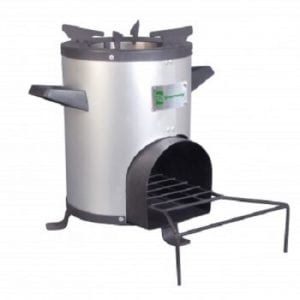
Agriculture
December 3, 2024
Implemented by
Greenway
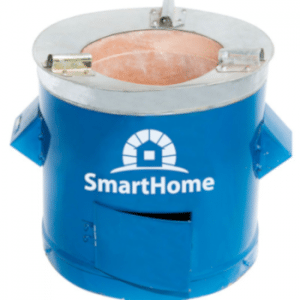
Agriculture
December 27, 2023
Implemented by
Green Bio Energy
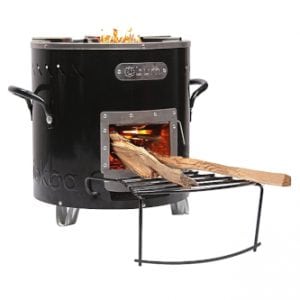
Agriculture
January 10, 2024
Implemented by
BURN Design Lab
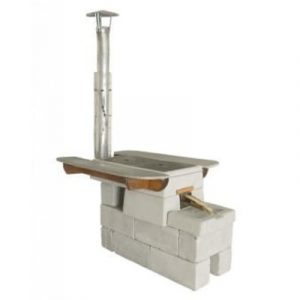
Agriculture
December 27, 2023
Implemented by
Helps International
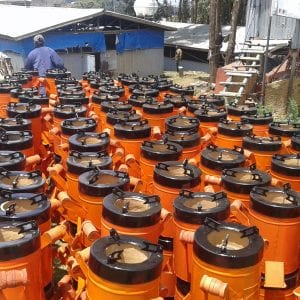
Agriculture
December 3, 2024
Implemented by
Gogle
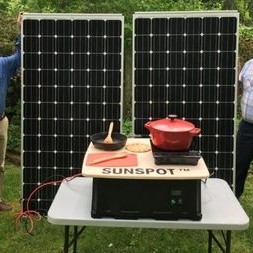
Agriculture
January 27, 2024
Implemented by
Sunspot PV LLC
Have thoughts on how we can improve?
Give Us Feedback